 In response to queries about the techniques used on Brookford to do the grass and so on, here is a brief description.
In response to queries about the techniques used on Brookford to do the grass and so on, here is a brief description.
I used a home made fly-swat/tea-strainer to start with. I have always been a great proponent of the home made tea strainer job, to the extent of boring people rigid (!) about it. This is mine:
The loco warning label is because of experience of frying DCC decoders if a loco is on the layout anywhere when using an electrostatic grass machine. Don't ask.
This produced results like this:
All this grass was done with it, although I didn't have any of the longer fibres back then:
I did think that painting on a second or third application of PVA glue would just flatten the first layer of grass, but after some experimentation I have found that it doesn’t. I assumed that covering the first application with more PVA would gum it all together and it would look awful. So I tried spray on 3M craft mount, which seems to be like thin spray-on Evo Stick type glue. It works well, but i found that gums up the fibres too much. So I tried another recommended way, using hair spray. That worked ok, didn't gum it up too much, but one brush with a passing hand, and half the fibres fell off.
Which is ok if you’re a horse.
Anyway, I was reading something somewhere which said that wetting the previously done area is what is important to maintain the effectiveness of the electrostatic bit - you need conductivity. So taking that logic a step further, after I had hoovered it, I tried brushing water over the whole area of grass that had dried (with a 2" domestic gloss brush) to moisten it, then went over with diluted PVA, about the consistency of milk, not as thick as single cream, on the basis that each fibre doesn't need a huge amount of "stick" to stay where it is. So that's where I've got to so far.
Later I borrowed a Noch Grass Master 2 to do the extensive areas required for my narrow gauge extension. It has an eight foot long and six inch wide incline leading to the micro layout bit, all of which is set in grass Downland. So I was pleased to have the chance to use the GM and try it out.
This shows another area - the incline up to the higher level baseboard where the cutting is - after the first application with the Noch GM. It would have taken a great deal longer with my trusty tea strainer!
Here are some of the fibres I used, mostly MiniNatur and Noch. The top ones are 12mm long and are ideal for 7mm/ft.
This is after a number of applications and added detailing. The flowers and so on are just various bits picked up from different ranges at model shops and exhibitions.
I went and photographed the Hampshire Downs last summer to get an idea of texture and density of different plants etc. Lots on the internet too about what plants grow on chalk downland. The chalk in the cutting is chalk I picked up on the field trips. Here I am using a hair trimmer to make a path once it was all dry:
I certainly found that I could get a greater density with the GM, using five different colour and length fibres all mixed in different proportions for each application.
So I would say that you can achieve good results with a £5 homemade tea strainer, but for sheer volume and time saving for large areas, as well as the using the nozzle for very localised application the £120 Noch GM2 is very good indeed. (Usual disclaimers, and thank for the loan, mate!)
But I didn't do the whole area on subsequent applications, I just did random patches, then I did even smaller areas, using the same technique but using the nozzle. And then I started adding "finger rolled" bits, having placed a blob of PVA where I wanted it. Letting it dry, and hoovering it, using a stiff brush in between each episode!
So, the Noch GM is a great bit of kit, especially for large areas and long fibres, and is just the sort of thing clubs should buy for their members to use.
-
 7
7



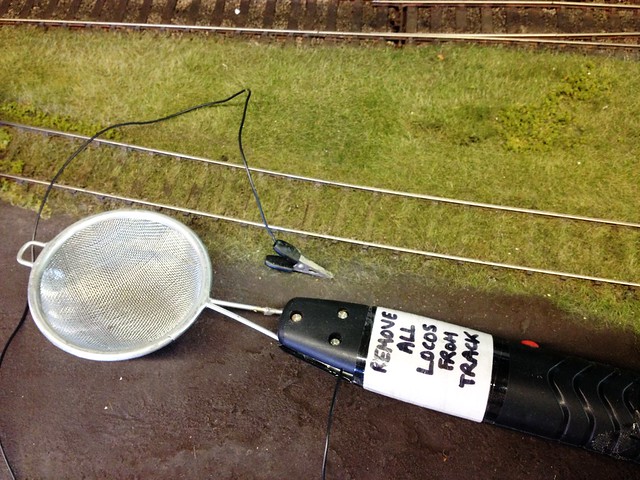

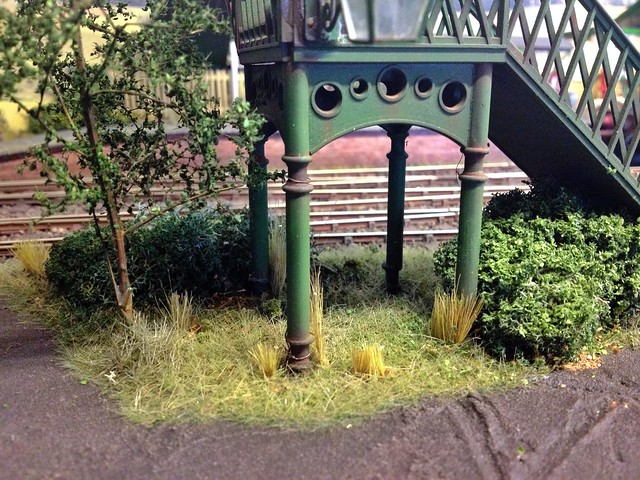

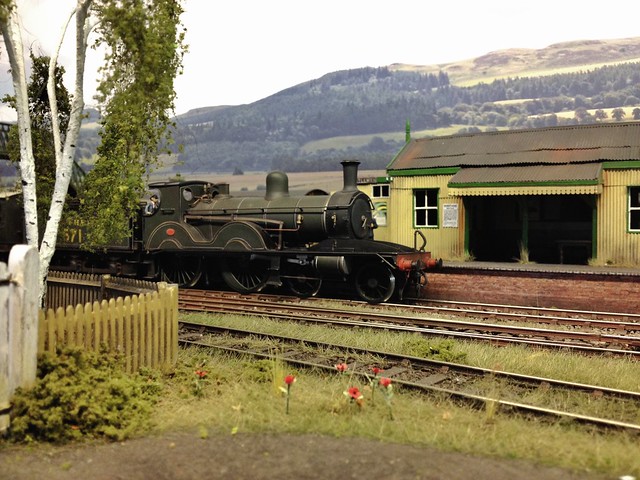

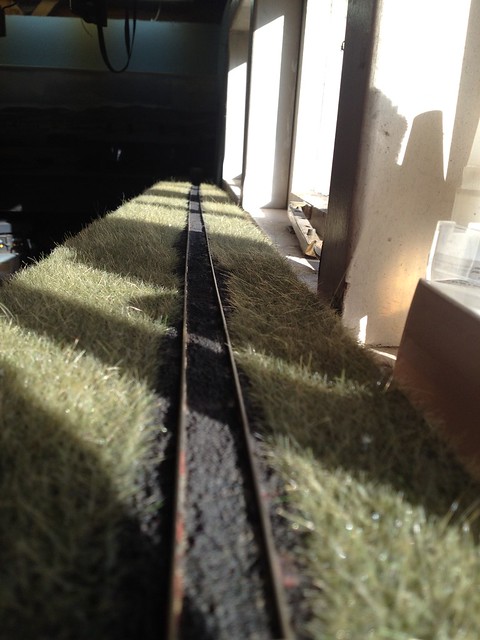

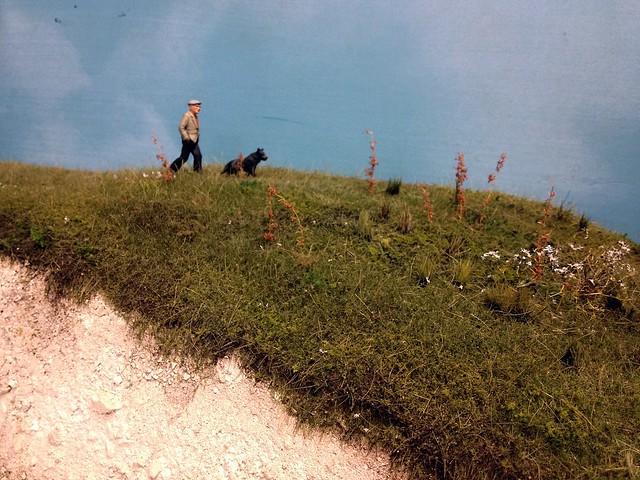
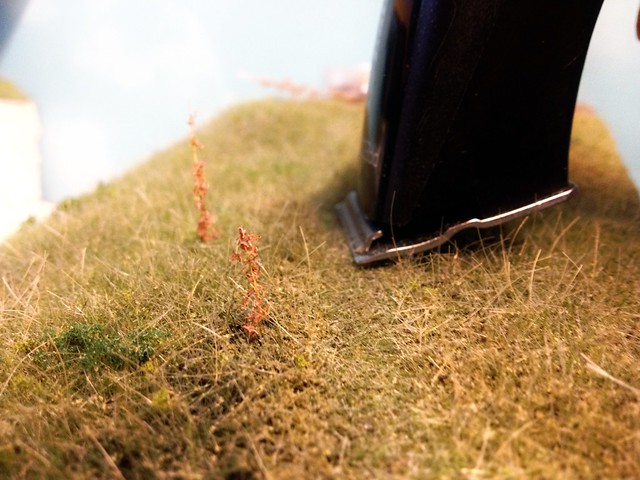
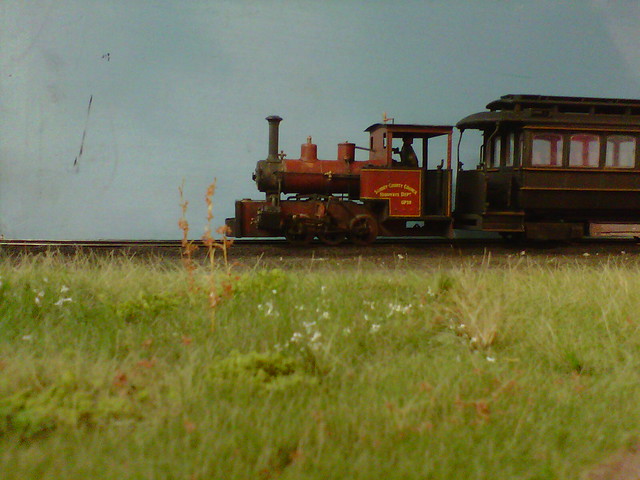

2 Comments
Recommended Comments
Create an account or sign in to comment
You need to be a member in order to leave a comment
Create an account
Sign up for a new account in our community. It's easy!
Register a new accountSign in
Already have an account? Sign in here.
Sign In Now